 Overview
Overview
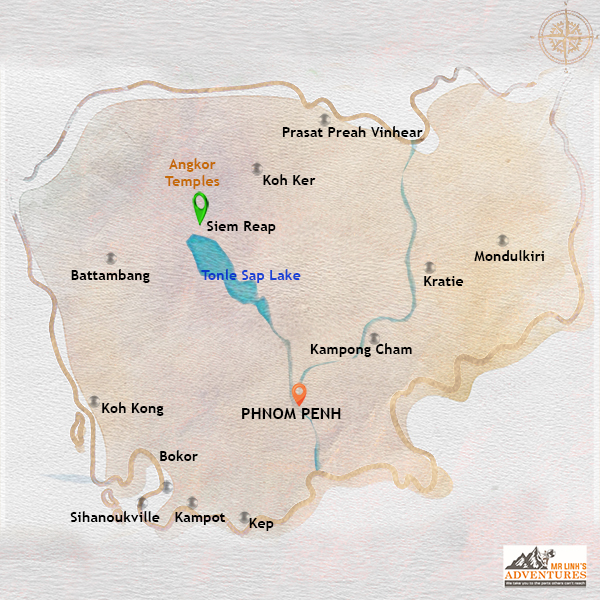
Located in the northwest of Cambodia,
Siem Reap is a charming and dynamic city that attracts travelers from around the world. Its name, "Defeated Siam," bears witness to a tumultuous history and ancient rivalries. It is best known for being the gateway to the
famous Angkor complex, a UNESCO World Heritage site and one of the largest religious complexes in the world. But Siem Reap is not limited to its temples. The city offers a lively atmosphere, a rich culture, and a variety of activities for all tastes.
Siem Reap, now a vibrant and lively city in Cambodia, has undergone a remarkable transformation. Once a simple village on the shores of Lake Tonlé Sap, its rise is attributed to the rediscovery of Angkor in the 19th century.
The Siem Reap River, winding from the hills of Phnom Kulen to the lake, irrigates a lush province, from the forests in the north to the rice fields in the south, providing a natural setting for the splendor of Angkor.
 Top Attractions
Top Attractions
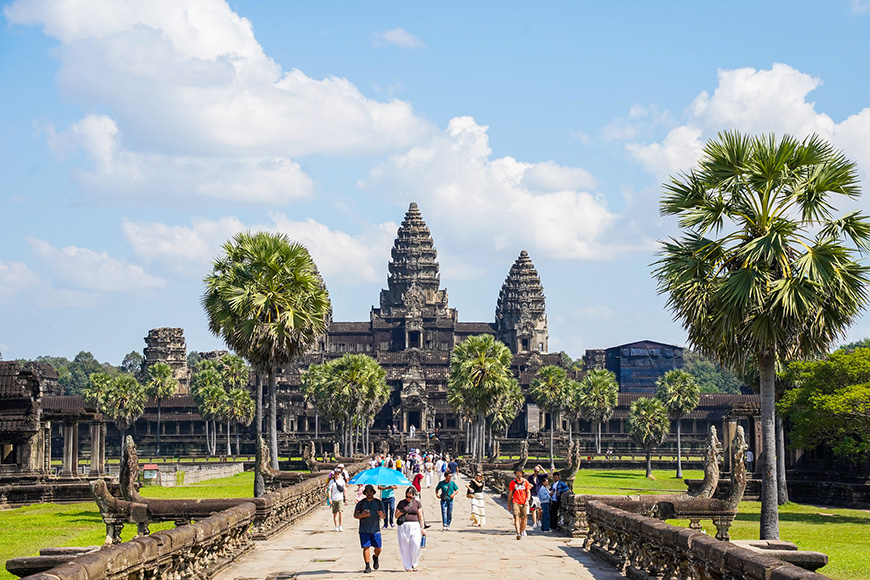 Angkor Wat an absolute must-see in Cambodia - Mr Linh's Adventures
Angkor Wat an absolute must-see in Cambodia - Mr Linh's Adventures
Siem Reap, Cambodia, offers an extraordinary journey into ancient wonders and vibrant culture. Here's why it's a must-visit:
Explore the Awe-Inspiring Angkor Complex
Prepare to be mesmerized by the Angkor complex, a UNESCO World Heritage site and the heart of Siem Reap. Witness the iconic Angkor Wat, a breathtaking architectural masterpiece, especially stunning at sunrise. Beyond, discover the enigmatic sculpted faces of Bayon temple and the mystical embrace of Ta Prohm, where ancient stones intertwine with giant tree roots, creating a scene straight out of an adventure movie.
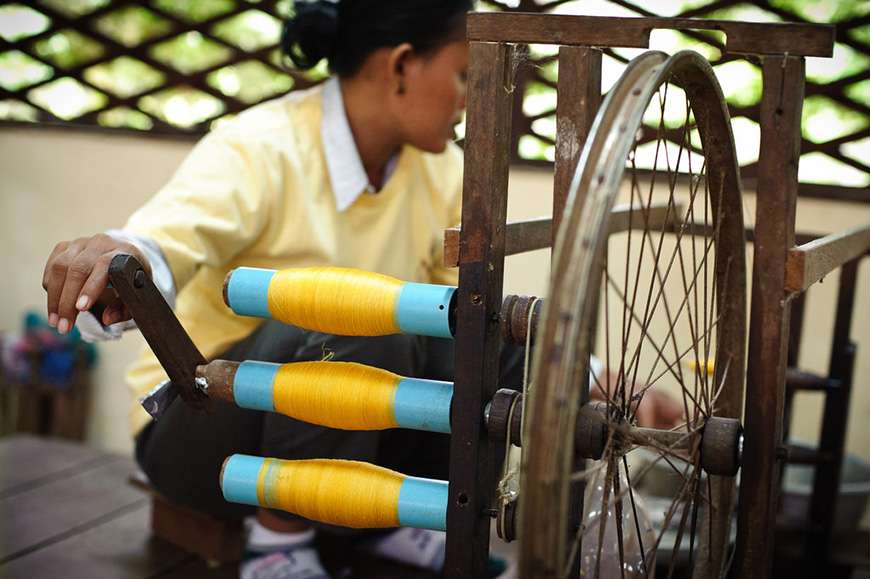 Angkor Silk Farm a precious traditional craft
Angkor Silk Farm a precious traditional craftImmerse Yourself in Authentic Cambodian Culture
Step into the vibrant pulse of Siem Reap's bustling local markets. The Night Market is a sensory delight, perfect for unique souvenirs, delectable street food, and exquisite local crafts, offering a true taste of Cambodian daily life.
Experience Siem Reap's Dynamic Nightlife
As the sun sets, Siem Reap comes alive. Pub Street is the epicenter of the action, with a plethora of bars and clubs for lively entertainment. For a more relaxed evening, discover charming quieter bars and restaurants offering live music.
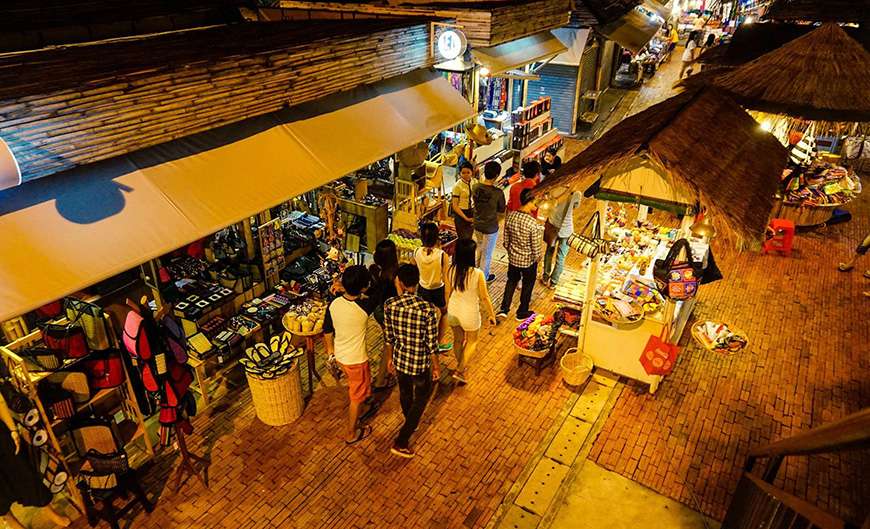 The vibrant night market of Siem Reap - Mr Linh's Adventures Team
The vibrant night market of Siem Reap - Mr Linh's Adventures TeamUnwind in the Serene Countryside
Escape to Siem Reap's breathtaking surrounding countryside. Explore lush green rice fields and traditional villages. An excursion into this serene landscape is an ideal way to experience authentic local life and discover secluded temples, perfect for nature lovers seeking rural Cambodian charm.
 See & Do
See & Do
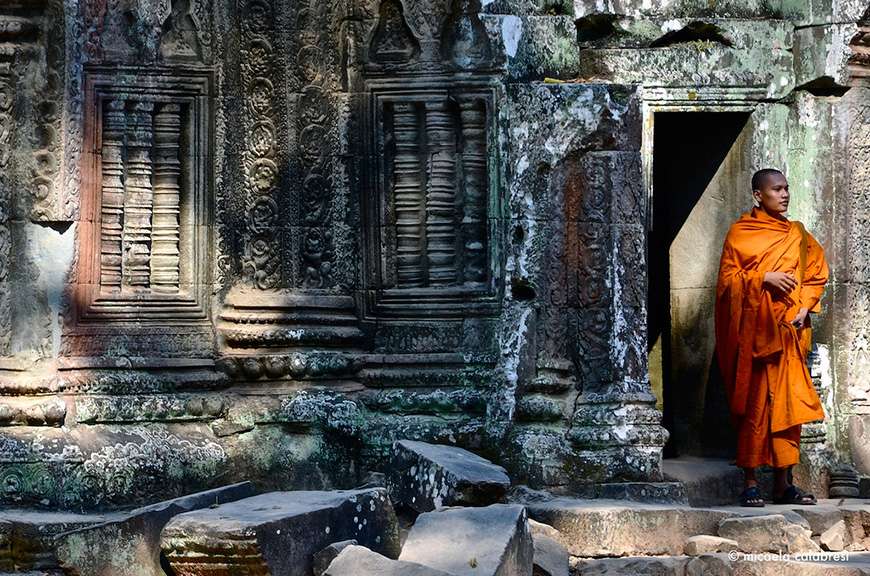 Siem Reap, it’s not just temples!
Siem Reap, it’s not just temples!
Siem Reap offers a variety of activities for all tastes. Adventure enthusiasts can hike in the jungle, go biking in the rice fields, or quad biking in the mountains.
Culture enthusiasts can visit local museums, attend an Apsara dance show, or take a Khmer cooking class. Families can enjoy a day at the water park, take a boat trip on Lake Tonlé Sap, or visit a crocodile farm.
Angkor is not limited to its most famous temples. Explore other sites such as Roluos, Ta Prohm, Baphuon, and the Terrace of the Elephants for a more complete and authentic experience of the region.
The Angkor National Museum is an essential complement to visiting the Angkor temples. It provides a better understanding of Khmer history, civilization, cultural heritage, and art through a collection of diverse objects and educational exhibitions. It is an ideal place to deepen your knowledge and appreciate the richness of the region's past.
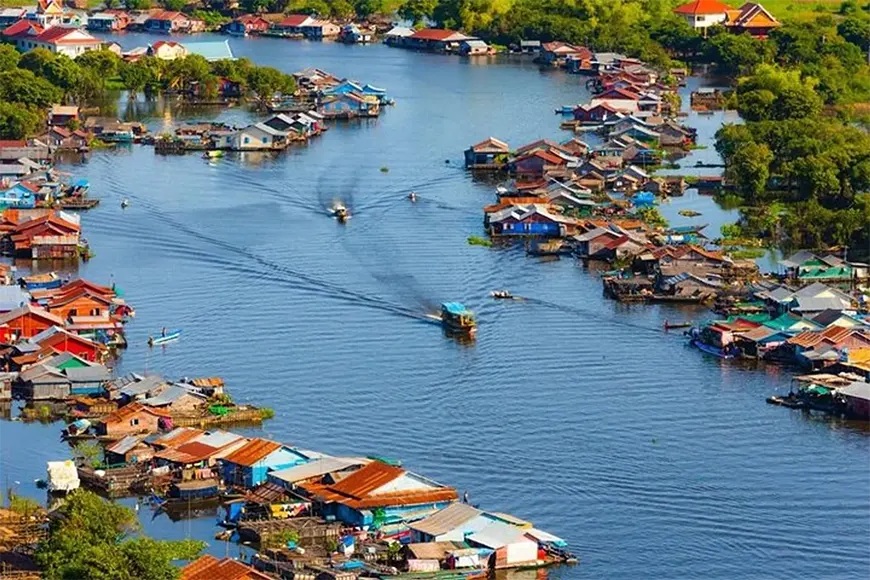 Enjoy a boatrip on the Tonle Sap lake
Enjoy a boatrip on the Tonle Sap lake
Siem Reap is a pleasant and easy city to explore. Tuk-tuks, walking, and biking are the best ways to get around and discover the charms of its downtown area. You can enjoy street food, massages, and the local atmosphere. The nearby Tonlé Sap Lake is an ideal destination for a boat trip and a visit to the Prek Toal bird sanctuary.
Siem Reap offers a variety of activities and visits for all tastes. The ACCB is a wildlife conservation center worth visiting. The Cambodia Landmine Museum is an important memorial site to understand Cambodia's history. The floating villages of Chong Khneas and Kampong Khleang are examples of local life and Khmer culture.
In Siem Reap, don't miss the Artisans Angkor village, a unique place to discover and support Cambodian craftsmanship. You will find original and authentic creations, showcasing the ancestral skills of the artisans.
 Go Green
Go Green
If you are looking for a unique and authentic experience in Siem Reap, Mr. Linh's Adventure offers tailor-made tours that will help you discover the hidden treasures of the region. You can explore the temples of Angkor off the beaten path, meet local communities, and experience Cambodian culture from the inside. Whether you are a solo traveler, a couple, or a family, Mr. Linh's Adventure will help you create an unforgettable journey.
 Heritage
Heritage
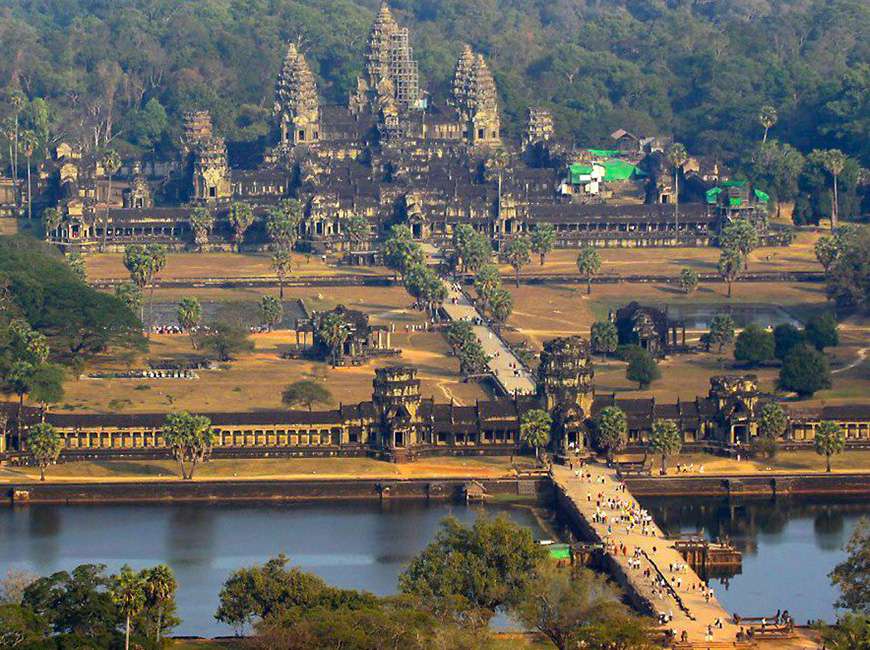 The famous archaeological complex of Angkor, a UNESCO World Heritage site
The famous archaeological complex of Angkor, a UNESCO World Heritage site
Unsurprisingly, travelers come to Siem Reap for the archaeological complex of Angkor, a UNESCO World Heritage site.
This ancient metropolis, one of the largest in the pre-industrial world, was the heart of the Khmer empire between the 9th and 15th centuries. Today, Angkor is a must-visit for history and culture enthusiasts, a unique testament to the richness of Southeast Asia's past.
Angkor is an exceptional site that houses some of the most remarkable temples in the world. Angkor Wat, the largest of them, is a symbol of Cambodia and a masterpiece of Khmer architecture. Angkor Thom, another important city in the complex, is home to the Bayon Temple, famous for its towers adorned with smiling faces. These temples, witnesses of Khmer history and culture, are essential stops on any trip to Cambodia.
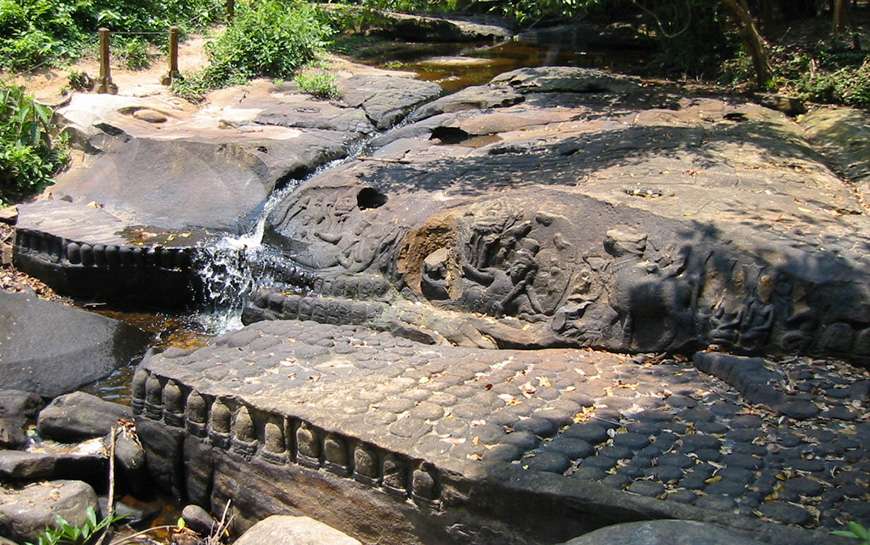 Kbal Spean River,a sacred landscape of enchanting beauty
Kbal Spean River,a sacred landscape of enchanting beauty
In the heart of the Cambodian forest, the Stung Kbal Spean River whispers a millennia-old story. Here, lingas and Hindu deities have been sculpted on the riverbed stones, creating a sacred landscape of enchanting beauty. Kbal Spean, the "Valley of a Thousand Lingas," is a magical place where time seems to stand still, inviting contemplation and reverie.
 Food & Drinks
Food & Drinks
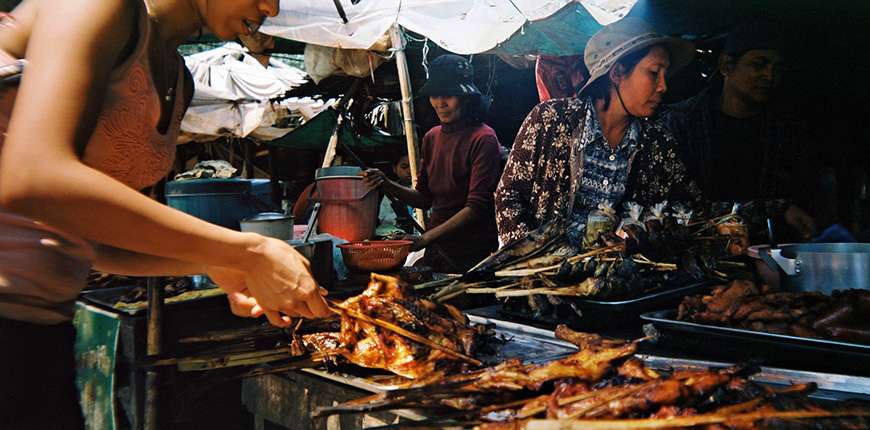 Do not miss out the delicious street food of Siem Reap !
Do not miss out the delicious street food of Siem Reap !
In Siem Reap, cuisine reflects local diversity. Fish is prominent, and many traditional dishes are prepared with it. Taste the fish amok, a must-try in Cambodian cuisine. Also, try the Khmer red curry, a delicious dish made with coconut milk and curry, often served with a baguette. Don't miss the Nom Banh Chok, a dish of fresh and light rice noodles, ideal for breakfast.
As the sun sets on Siem Reap, the city lights up and the party begins. Pub Street, a lively thoroughfare, comes alive and attracts crowds looking to enjoy the warm atmosphere of bars and pubs. The Angkor Night Market, on the other hand, offers a spectacle of colors and flavors, with its food stalls and entertainment. And for a wild night out, the Angkor What? Bar and Comedy Club welcomes you, where music, dance, and humor are on the agenda.
 Directions
Directions
Location
Siem Reap is located about 320 km north of Phnom Penh, the capital of Cambodia.
How to get there
You can travel to Siem Reap by plane from Hanoi or Ho Chi Minh City. The price of plane tickets varies depending on the airline and the season.
Best time to visit
The best time to visit Siem Reap is from November to February, when it is dry and sunny.